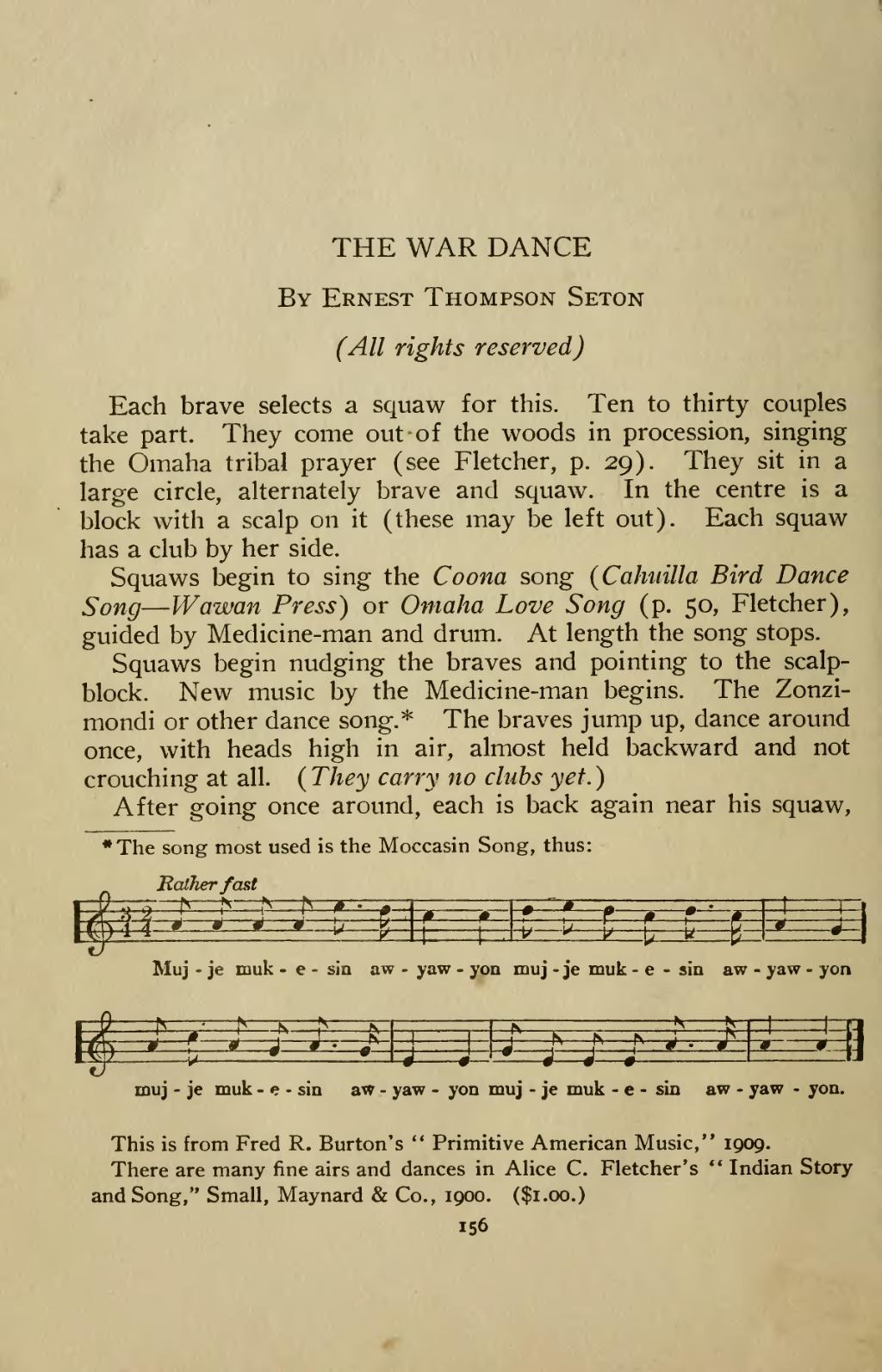THE WAR DANCE
By Ernest Thompson Seton
(All rights reserved)
Each brave selects a squaw for this. Ten to thirty couples take part. They come out of the woods in procession, singing the Omaha tribal prayer (see Fletcher, p. 29). They sit in a large circle, alternately brave and squaw. In the centre is a block with a scalp on it (these may be left out). Each squaw has a club by her side.
Squaws begin to sing the Coona song (Cahuilla Bird Dance Song — Wawan Press) or Omaha Love Song (p. 50, Fletcher), guided by Medicine-man and drum. At length the song stops.
Squaws begin nudging the braves and pointing to the scalp-block. New music by the Medicine-man begins. The Zonzimondi or other dance song.* The braves jump up, dance around once, with heads high in air, almost held backward and not crouching at all. (They carry no clubs yet.)
After going once around, each is back again near his squaw, ..text pokračuje
- The song most used is the Moccasin Song, thus:
Balher/ast l!^=l^ u t=t;c fc=fc Muj - je muk - e - sin aw • yaw - yon mu j - je muk - e - sin aw - yaw - yon T=3 £3 S
- i=i:
muj - je muk - e • sin aw - yaw - yon muj - je muk - e - sin aw - yaw - yon. This is from Fred R. Burton's " Primitive American Music," 1909. There are many fine airs and dances in AHce C. Fletcher's " Indian Story and Song," Small, Maynard & Co., 1900. ($1.00.)
